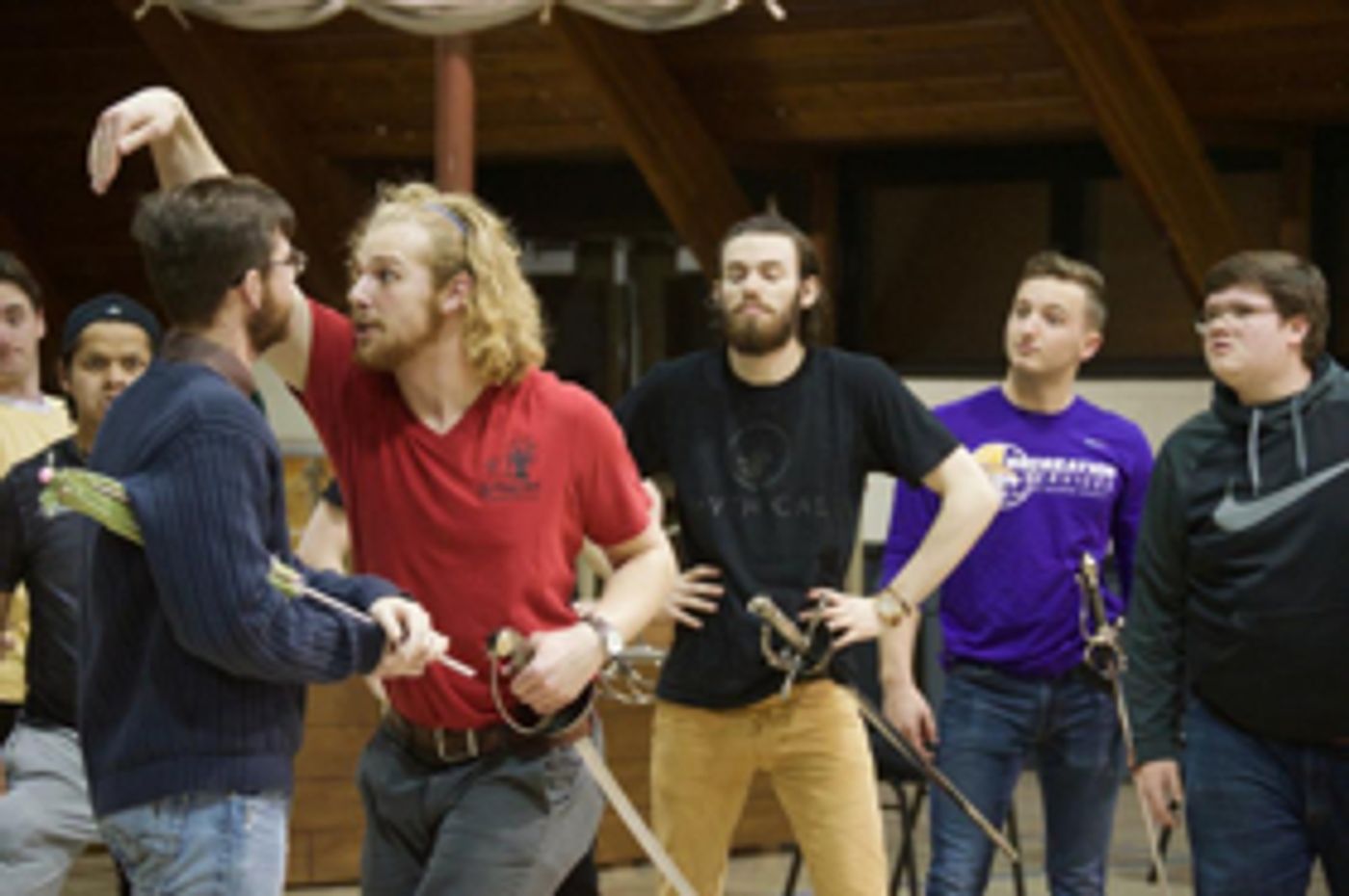BWW Blog: Fosse Pirates

Preparing for a major project, such as choreographing a musical, seemed very intimidating at first. Even as I wrote the choreography there were moments that I wasn't sure if the approach that I was taking was going to work for the show. I had a basic concept for the production: it was supposed to appear as a cartoon. Not physically, but characteristically, the bodies on stage were supposed to seem like they were from another world.
For those of you who don't know, the production I'm choreographing is "The Pirates of Penzance" at my University (Photo credit to Katherine Harnisch). The story involves three main groups: the pirates, the daughters, and the police. The story revolves around these three groups interacting with each other. The pirates are trying to marry the daughters but the daughters (kind of) don't want to marry the pirates, so they recruit the police to save them. The problem is that the pirates are incredibly simple, the daughters are overly silly, and the police are glorified puppets. Each group is very distinct and has to contrast the others.
Before I started writing choreography, one of my first intentions was to create three very distinct groups and to try to give them each specific "genres" or "moods." I wanted the audience to be able to recognize distinct characteristics in the way each group moved that would emphasize their personalities. With this approach in my head, I tried not to let the same steps that the girls had bleed into a song that the pirates had. The daughters scamper, the pirates stride, and the police waddle. Having those distinctions gave me a specific vision for each group and made choreographing much more fun.
The best part of putting together choreography is actually seeing it performed by the cast. As a choreographer for several productions and different settings, I've learned that an idea is only as good as the performer's ability to bring it to life. A choreographer has to keep the actors in mind and craft the numbers around what the actor will look best doing. This isn't to criticize the ability of the actor, but emphasize the importance for the choreographer to identify and adapt to the strengths of the cast. I once read a story about Bob Fosse and how he was successful as a choreographer because he was able to individualize his dancers and give them movements that worked best for their bodies. That's what creates a visually stunning performance: creative choreography that the cast feels comfortable and confident performing.
Nothing is better than teaching a piece of choreography and seeing the actors run with the structure and the ideas they've been given. Thankfully, this cast is full of actors who have many creative ideas of their own. It has been so cool to see how they merge their interpretation of the characters with the interpretations I've had. There have also been many moments that an idea I had hasn't worked but the actor has been able to fill the space with their own idea, and it has worked perfectly. It takes adapting, experimenting, and being inspired by what everyone brings to the table. I love the collaboration of the whole process. No one is working solo in the show.
This is the last week of rehearsals before we move out of our rehearsal space and onto our stage! That means more adapting and adjusting. Let's do it.

Videos

